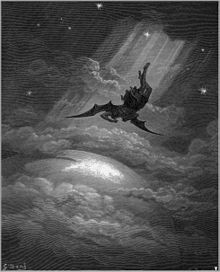Archaeological traces of a mythology around Venus are a sign of an advanced civilization. Indeed, the phases of Venus span 580 days. A priest or shaman observing the sky regularly can easily realize this and memorize the constellation on the horizon at the phase change and deduce the duration of this cycle. However, Venus and Earth are in almost the same position relative to the rest of the celestial vault every 8 years, requiring an ability to conserve and transmit observations to be deduced. The Maya civilization, for example, had a religious calendar based on this 8-year cycle, as the Dresden codex proves. Finally, Venus transits take place every 121.5 or 105.5 years after 243-year cycles, so their predictions required very important intergenerational transmission or precise calculation of incidence angles. As a result, there is no record of transit forecasts until the 17th century.
No civilization has missed the exceptional astronomical characteristics of Venus and it has inspired many myths. To begin with, given its proximity, size and reflectivity of clouds, it is the third brightest star in the earth’s sky after the sun and moon. Moreover, because its orbit is lower than Earth, Venus never strays from the Sun and is therefore never visible at midnight. However, it still wanders in the daytime sky but is masked by the power of the sun that makes the sky blue. Moreover, this star is often the brightest after the moon and the sun, it is often the last to fade in the morning or the first to appear in the evening.
Venus’ movement breaks down in two phases of 260 days each separated by a few days when it is too close in front of or behind the sun to be visible. The first phase is called the morning star that appears when Venus is in front of the Earth-Sun axis. Venus emerges from the horizon in the east, shortly before dawn and rises until the sun bluishs the sky. From a symbolic point of view, this ascent precedes dawn was seen as an allegory of growth, birth and love that precedes birth (dawn). Other civilizations saw in its position before the sun the guide of the sun chariot.
The second phase is called the evening star. During this period, Venus is behind the Earth-Sun axis. It is not visible in the morning because it appears on the horizon after dawn. However, it is the first star to reappear in the evening when the brightness of the sun begins to decline. It appears above the Sun, which it follows as it descends towards the horizon and disappears shortly after dusk. The symbolism is completely opposite to the morning star. It is associated with the idea of the fall, of death, but also of ambition in view of its pursuit of the sun.

Some civilizations have seen two distinct celestial objects and have therefore assigned different deities to them. This was the case at the beginning of Greek civilization with Eosphoros (aurora bearer) or more simply Phosphoros (light carrier) for the morning star and Hesperos (wearer of twilight). Although their kinship varies according to the sources, one version indicates that the two would have as their mother Eos, the goddess of dawn who drove the solar tank. With her husband, the heavenly god Astreos, Eos would have had Phosphoros who would have the honor of preceding, in the morning, the chariot of his mother. However, after a link between Eos and the mortal Cephale, Hesperos falls from the celestial vault in the evening following the solar chariot. In Roman times, when everyone had come to understand that Venus was just a planet, the myths of Phosphoros and Hesperos took the names Lucifer and Vesper.
The Sumerians are one of the first civilizations to be traced by a unified cult of the two phases of the morning and evening star. They saw Inanna, one of the main goddesses of their pantheon. She was the goddess of beauty, sex, fertility (morning star) but also war and death (evening star). This mythology was taken up by the Babylonians and Assyrians without much change under the name of Ishtar. It was recovered by the Greeks in parallel with the duo Phosphoros and Hesperos under the name Aphrodite. She remains the deity of love and sex but loses the goddess side of war and death. Passing through the Roman world, Aphrodite took the name of Venus which remained the western name of the planet.
At the same time, the Canaanies saw in Venus a minor god who wanted to take the place of the supreme god (the ascent of the morning star) before failing and falling to the underworld (fall of the evening star). This theme was taken up in the Hebrew Bible, within the book of Isaiah. The comparison with Venus no longer evokes the fate of a deity but the ascension and then the fall of a king of Babylon. When the Roman Empire adopted Catholicism, to translate into Latin the Hebrew term “helel” (bright star) evoking the morning star, the authors took the Latin name of this star, that is, Lucifer. But the meaning is changing radically. The simple comparison between the journey of Venus and the journey of a fallen Babylonian king has become the myth of an angel who organized a rebellion against God before being banished from paradise and falling to hell. Lucifer is therefore associated with Satan and Belzebuth in the image of the devil. Satanism therefore represents certain symbols associated with Venus or the mythologies that surround it, such as the pentagram that comes from the successive positions of The Sun-Venus conjunction in the celestial vault over a period of 8 years.

Lucifer is also often associated with the Greek Prometheus. Prometheus is a titan of Greek mythology very attached to humanity. He is sometimes considered the blacksmith who would have created humans. He is known for wanting to steal from Zeus the sacred fire (which refers to divine knowledge) to give it to Man. For this, he was condemned to be attached to the mountains of the Caucasus and to have his liver ripped off every day by an eagle. First, Prometheus is often associated with a torch carrying the sacred fire: gold, Phosphoros (the Greek name for Lucifer) can be translated as light carrier or simply torchlight. Moreover, the fall of the evening star can easily be associated with the descent of the sacred fire from the heavenly vault to Humanity. Finally, Lucifer’s association with the devil’s image by Catholicism closed the loop, for in genesis Satan would have pushed Eve to taste the fruit of the tree of knowledge.
With the Age of Enlightenment in Europe, the term Light is once again associated with knowledge. So the light bearer (the meaning of Lucifer) becomes a symbol of knowledge and reference to rebellion against God. It sticks to the fight against religious obscurantism that was underway at the time. Lucifer thus took on a more positive meaning and in the 19th century was at the origin of a movement of thought called “Luciferism” and clearly distinct from Satanism. Although rarely clearly expressed, some works rely on the iconography of the light bearer to symbolize the democratization of knowledge. One can cite the genius of freedom at the top of the July column (in homage to the revolutionary of 1830) Place de la Bastille in Paris: some see lucifer, because he is an angel with a torch (symbol of knowledge) in one hand, broken chains (symbol of revolt) in another.

